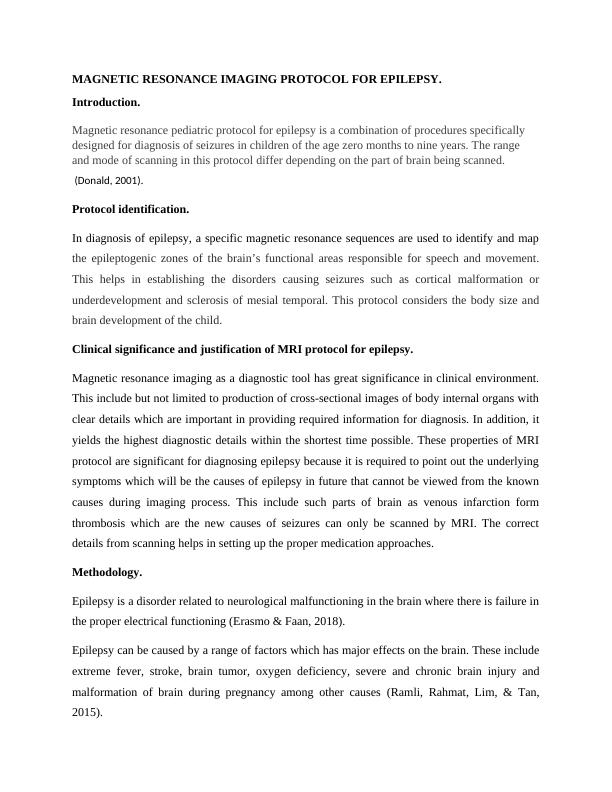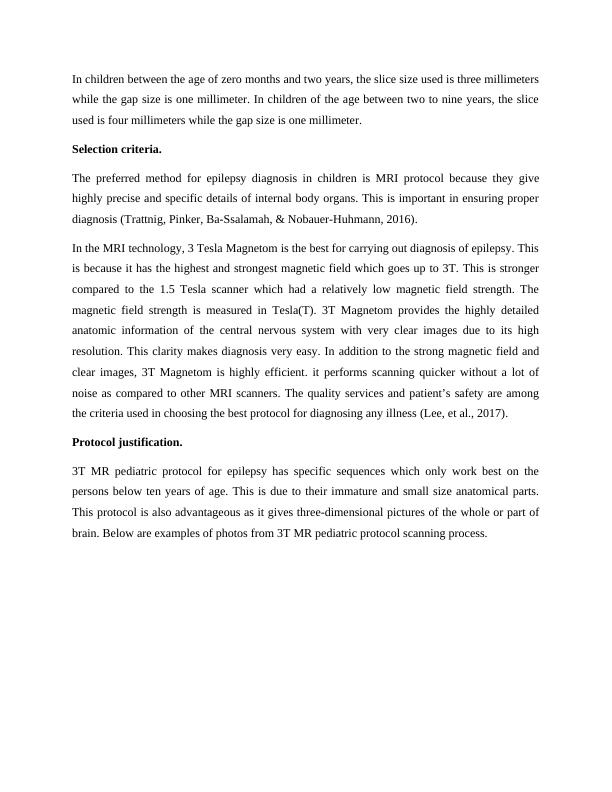Magnetic Resonance Imaging Protocol for Epilepsy
A critical analysis of a particular Pediatric Neuroradiology MRI Protocols, relating it to current literature and providing justifications for the protocol particulars.
10 Pages2752 Words193 Views
Added on 2023-06-03
About This Document
Magnetic resonance imaging (MRI) protocol is used for diagnosing epilepsy in children. The protocol identifies and maps epileptogenic zones of the brain's functional areas responsible for speech and movement. MRI is safe, efficient, and cost-effective for diagnosis. The protocol has specific sequences that work best on children below ten years of age. The preferred MRI device for diagnosis is 3T Magnetom. Desklib offers study material with solved assignments, essays, dissertations, and more.
Magnetic Resonance Imaging Protocol for Epilepsy
A critical analysis of a particular Pediatric Neuroradiology MRI Protocols, relating it to current literature and providing justifications for the protocol particulars.
Added on 2023-06-03
ShareRelated Documents
End of preview
Want to access all the pages? Upload your documents or become a member.



